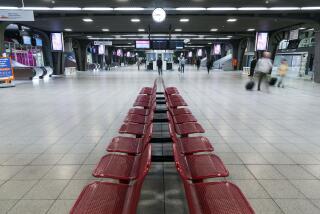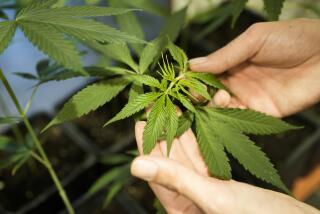DRUGS THE DUTCH WAY : Respecting the Line Between Soft and Hard : Marijuana and hashish are sold in coffeehouses, but usage has dropped. Treatment for harder drugs stresses easy access, including a roving ‘methadone bus.’
- Share via
The Dutch approach to drug use is much more pragmatic than the British system, which views addiction as a disease in need of treatment. Its premise is simple and humane. Drug users are “deviant neighbors rather than outsiders,” says Henk Jan van Vliet, director of Metrolink, an Amsterdam-based research organization. The authorities’ tolerance, however, is not blind. Users will be vigorously prosecuted for drug-related crimes.
Addicts constitute roughly one-one thousandth of the Dutch population, with most living in Amsterdam and Rotterdam. The drug problem, then, is quite small--and the goal of Dutch policy is to keep it that way.
Faced with the increasing availability of hard drugs in the 1970s, the Dutch adopted a strategy aimed at preventing young people who might experiment with “soft” drugs from graduating to the more dangerous narcotics. The markets for marijuana and hashish were separated from those for opiates, amphetamines and cocaine. Possession of fewer than 30 grams of marijuana intended for personal use (a little more than an ounce) was legal. Marijuana and hashish were discreetly sold at coffee houses and youth centers in certain areas of a few big cities. Advertising, sales of other drugs and rowdiness were prohibited. Anyone under 16 years of age was barred from participating.
The strategy worked. Since 1976, when the program was introduced, the number of Dutch users of marijuana and hashish has dropped, despite the drugs’ low price and easy availability.
Older Dutch addicts number between 10,000 and 20,000. More than 40% of them eschew injection, preferring their drugs (heroin and cocaine) in smokeable or inhaleable form. Crack cocaine was marketed in the Netherlands as early as 1973, but it didn’t catch on. The “hard” drugs are not legally available in the Netherlands.
Dutch policy toward these hard-drug users seeks to facilitate treatment by creating a “low threshold” for entry into programs. This includes such “user friendly” services as the methadone bus that makes the rounds of neighborhoods where drug users live. This approach has brought about 80% of the country’s dependent drug users into contact with treatment.
Another Dutch concept is “normalization”--the acknowledgement that drug use, like alcohol use, is here to stay, and that a policy that seeks to reverse this reality is doomed. Thus, Dutch users are “encapsulated”: They have their rights and obligations, and they are not pushed into society’s margins.
In the face of the AIDS epidemic, Dutch drug policy, like Britain’s, has become increasingly oriented toward “harm reduction.” Because of their previous policies, the Dutch were prepared when AIDS arrived in the Netherlands in the early 1980s. They quickly instituted a needle- and syringe-distribution program. The Dutch Federation of Junkie Unions--an organization of active drug users--was invited to participate in government planning sessions on AIDS.
The Dutch approach to drugs is rooted in its culture of shared responsibility for common problems. Only in an American writer’s imagination did Hans Brinker hold back the sea single-handedly. The reality, of course, is that everyone’s efforts were needed to build the dikes and dig the canals that contain the sea.
This spirit largely shapes Dutch attitudes toward drug users--they are citizens who are expected to behave themselves and contribute to society.
More to Read
Sign up for Essential California
The most important California stories and recommendations in your inbox every morning.
You may occasionally receive promotional content from the Los Angeles Times.













